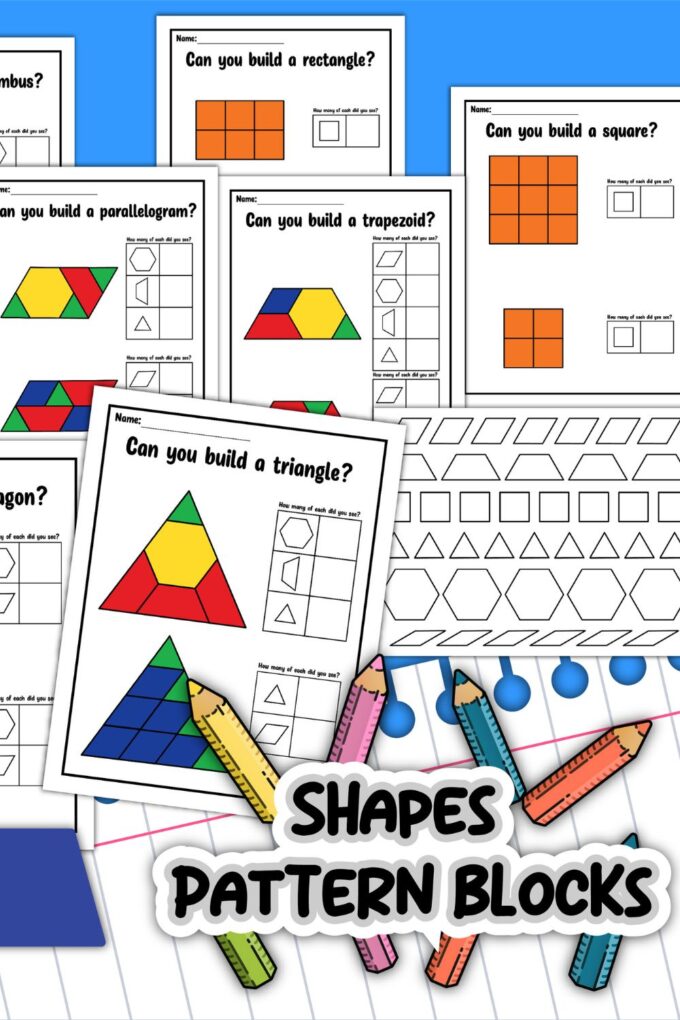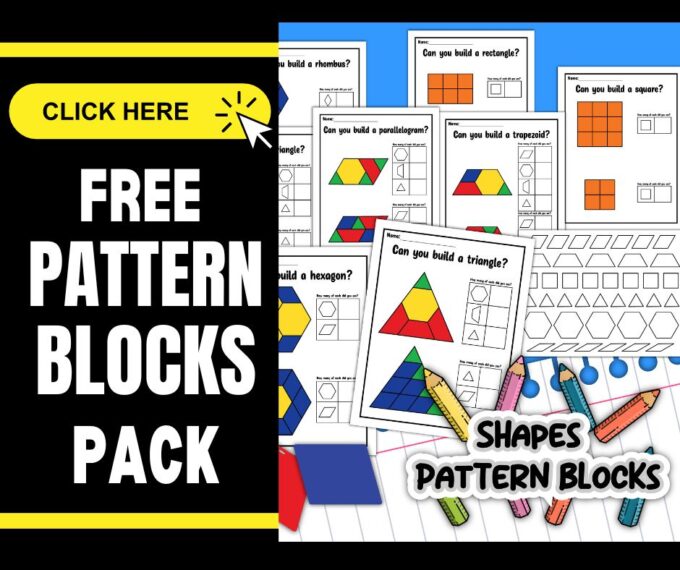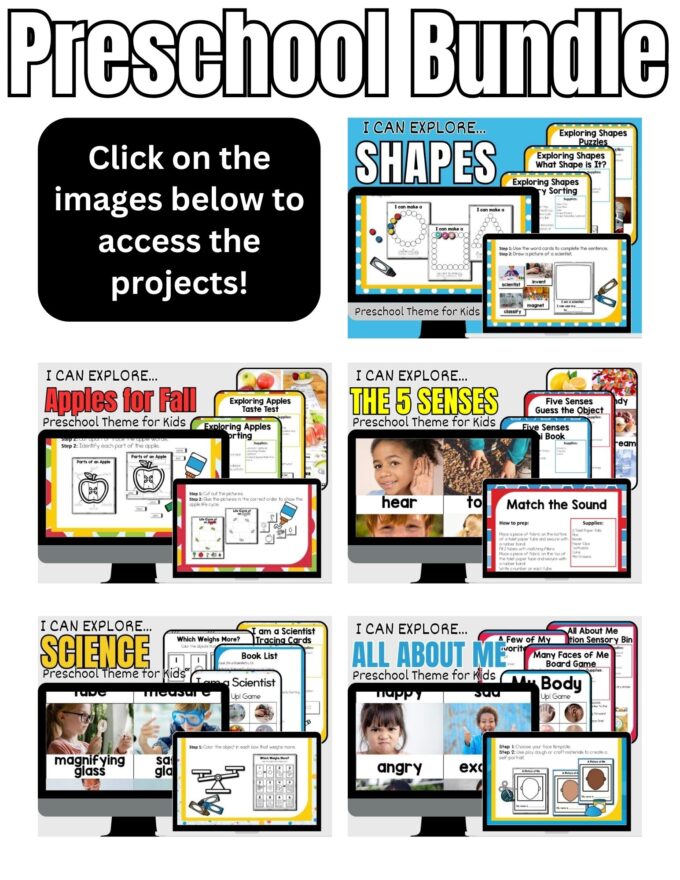Pattern blocks are excellent tools for introducing and reinforcing fundamental math concepts to young kids. Through hands-on exploration and creative play, kids can develop a strong foundation in various mathematical principles. These include shape recognition and classification, as they learn to identify and sort different geometric shapes based on attributes such as color, size, and number of sides.
What are Pattern Blocks?
Pattern blocks are geometric shapes, including triangles, squares, hexagons, and rhombuses. Generally, they are made out of either plastic or wood. Each shape is assigned a specific color to help with recognition and classification.
Our free printable pattern block mats come with paper pattern blocks that you can use if you do not have a set of them available.
Pattern activities help children understand symmetry, rotation, and tessellations, while puzzle-solving tasks enhance their spatial reasoning and problem-solving abilities.
Additionally, combining and comparing pattern blocks provides an easy introduction to concepts like area, perimeter, and even fractions as kids visually explore how different shapes can be used to form more complex shapes.
Pattern blocks are typically introduced and used in kindergarten through second grade (K-2). These blocks are well-suited for this age group because they provide a hands-on and visual way to explore basic geometric concepts, spatial reasoning, and fundamental math skills.
They can be used with preschoolers, but the approach differs slightly. While preschoolers might not engage in the same complex activities as older children, they can still benefit from simple and engaging pattern block activities that promote hands-on exploration and basic learning concepts.
Preschoolers can start with activities that focus on shape recognition and basic sorting. They can learn about different shapes by identifying and matching pattern blocks to corresponding outlines or pictures. Creating simple patterns using a few blocks can also be enjoyable and educational.
Additionally, preschoolers can explore the sensory aspect of pattern blocks by manipulating and arranging them to create their own designs. Open-ended play encourages creativity and fine motor skill development.
Pattern Block Activities
What can you do and learn with pattern blocks?
- Free Play and Exploration: Encourage unstructured play with pattern blocks to allow children to familiarize themselves with the shapes and colors. Discuss the concept of symmetry and encourage kids to create symmetrical designs.
- Shape Recognition and Sorting: Guide children in identifying and sorting pattern blocks by shape, size, and color. Introduce vocabulary related to shapes and colors.
- Pattern Replication: Provide pattern cards with designs and challenge kids to recreate these designs using pattern blocks. Enhance visual discrimination skills and attention to detail.
- Puzzle Solving: Present puzzles or templates where pattern blocks must be fitted together to complete a picture. Strengthen fine motor skills and spatial reasoning. See below!
- Creating Original Designs: Encourage children to design their own patterns and images using the blocks—Foster creativity and self-expression.
- Mathematical Concepts: Explore area, perimeter, and fractions by combining and comparing pattern blocks. Lay the foundation for more advanced math skills.
Free Printable Pattern Block Mats
Add these printable pattern block mats to your math center!
More Pattern Block Activities
There are so many fun ways to explore pattern blocks! Whether you use these free printable pattern block mats or you use your imagination, make math fun!


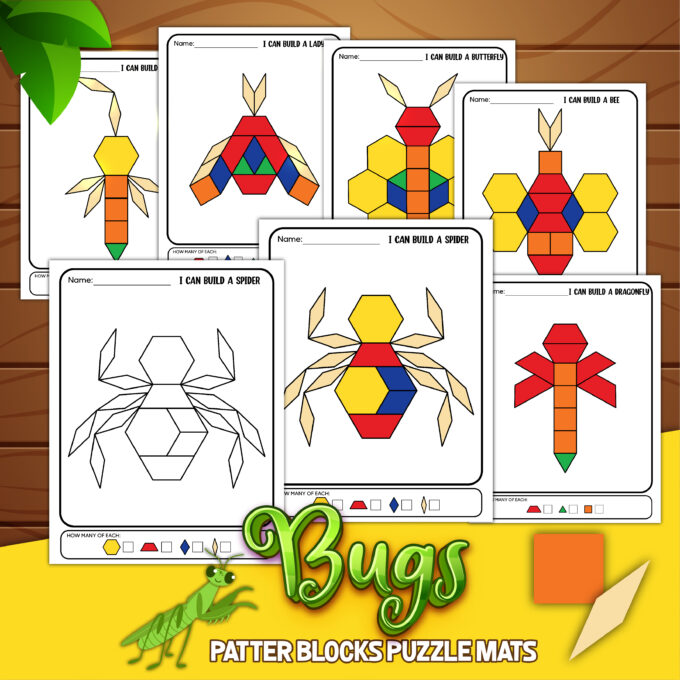
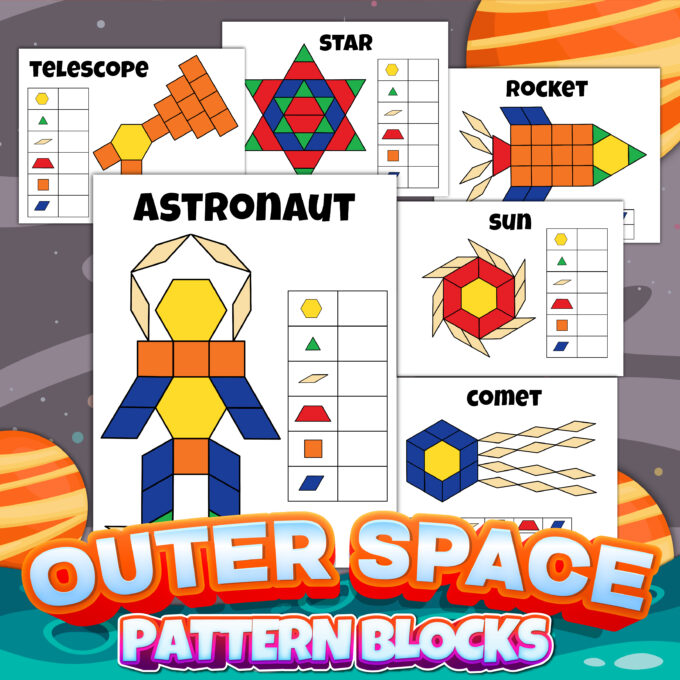
More Fun Math Activities For Kids
- Shape Activities
- Shape Playdough Mats
- Color By Number Worksheets
- Ten Frame Printable
- Math Activities For Preschoolers
- Tessellations
- Hundreds Chart
- Snap Cube Number Mats
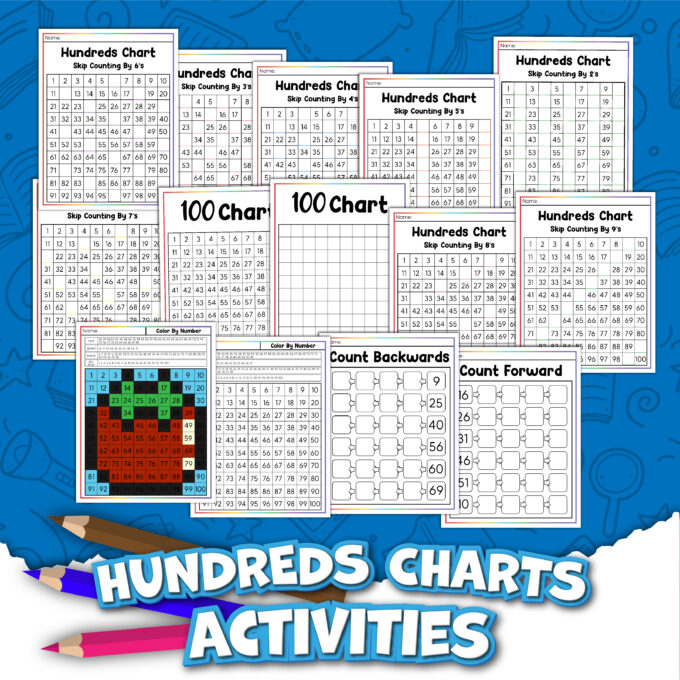
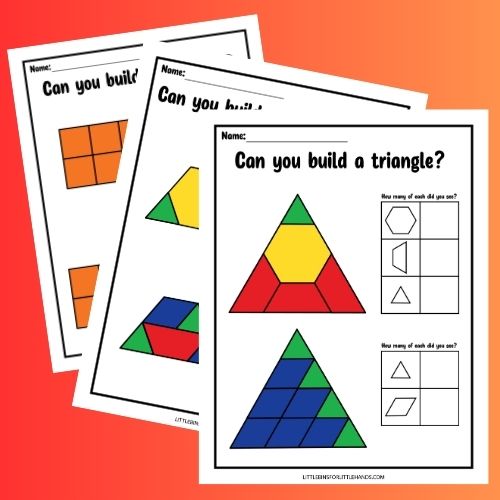
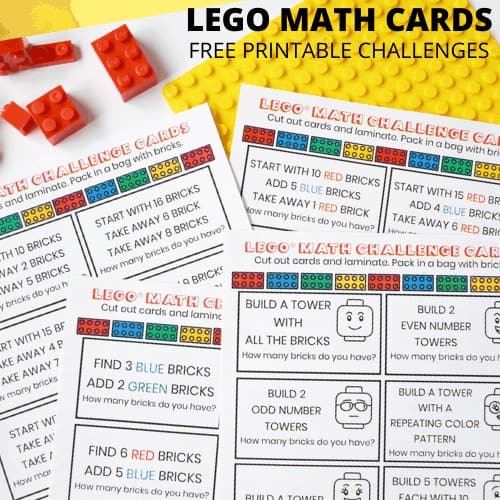
Printable Preschool Bundle Pack
Get ready to explore this year with our growing Preschool STEM Bundle!
What’s Included:
There are five fun preschool themes to get you started. This is an ” I can explore” series!
Each unit contains approximately 15 activities, with instructions and templates as needed. Hands-on activities are provided to keep it fun and exciting. This includes sensory bins, experiments, games, and more! Easy supplies keep it low cost and book suggestions add the learning time.


